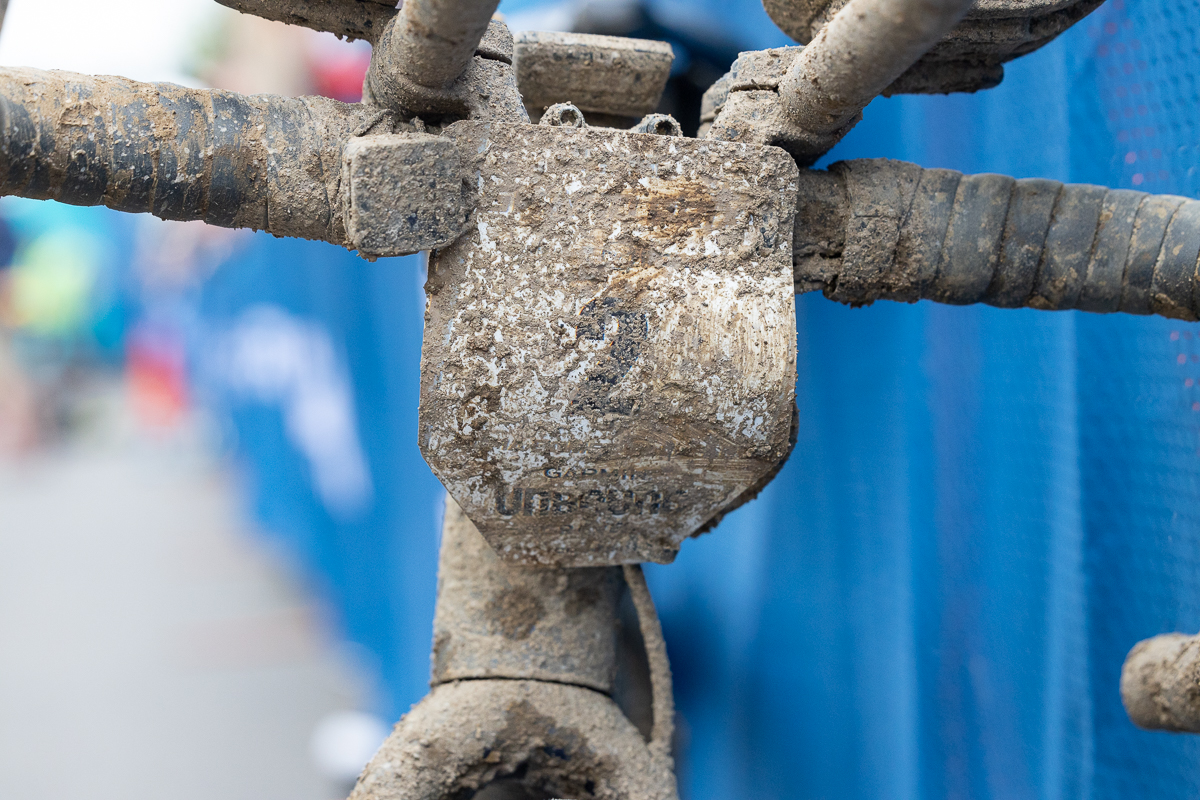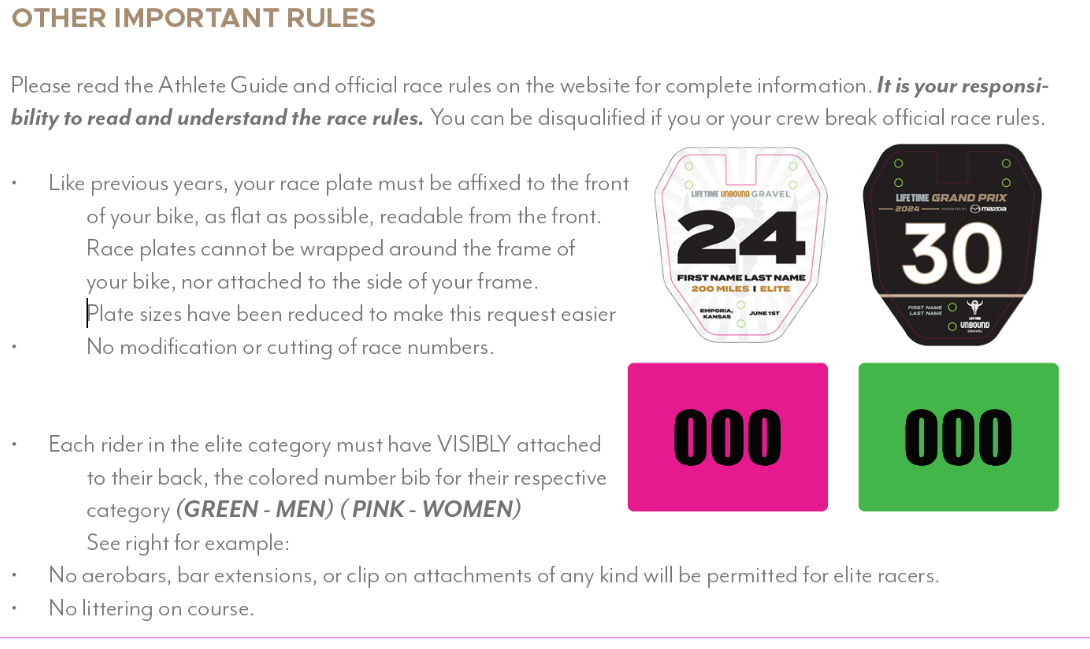
In a video posted to the official Unbound Gravel Instagram feed, the organisers of the biggest gravel race of the year urge participants to keep their race number plates flat and clearly visible on the front of their bikes, stating that “If you wrap your plate, the timing chips on the back cannot be read by our timing mats and could result in disqualification.”
Though the wording of the post is relatively vague, it appears that the threat of disqualification isn’t because of any rules being broken, but more due to the fact that Unbound claims that modifying the number plate could result in damage to the timing chip on the back, or perhaps not allow it to be read properly by the timing mats, and resulting in no time being read, rather than a disqualification for a breach of rules.
The arbitrary nature of the wording of the Instagram is also reflected in the slightly ambiguous wording of Rule 11 of the Unbound rulebook, which states:
"Athlete 'Race Plates' MUST be affixed to the front of the handlebars. Athlete 'Race Plates' MUST NOT be bent, folded, wrapped around the head tube, or in any other position than flat against the handle bars. Improper attachment of the race plate will cause timing chips not to register and may be cause for disqualification."
Again, the official rules seem to offer up a grey area where it is the malfunction of the timing chip, rather than the bending of the plate itself that is cause for a DQ.
Comments on the post have been almost universally negative, citing the significant aero losses that running a flat plate on the front ones will entail.
Cyclingnews reached out to the event's organisers, Life Timem, who have offered up some additional clarity.
"If a rider approaches us after the race claiming that their result isn’t in the system, and brings us a bike plate that has been cut across the tag or heavily manipulated to the point that its integrity was not preserved, our inclination would be to DQ that rider as it is against the rules.
"Once the tags are removed from along the bottom pre-race, they’re no bigger than plates in the past, in fact, they’re actually smaller than in some recent years.
"This is the third year we've created this video after timing issues in 2021. This rule is also in its third year. Many events are creating the same content and having the same problems.
"Additionally, each bike plate for our amateur field is customized with their name as a keepsake for the rider, a tradition we have had for many, many years. The majority of our amateur field is not out there to “get aero,” they’re out there to enjoy the adventure, find their limit, and finish."

One of the men's pre-race favourites, Matt Beers (Specialized Off-Road), weighed in, commenting: "'Could be disqualified' I’ll take the risk."
Life Time, however, has confirmed that Elite riders will be given a smaller, more aerodynamic race number than amateurs.
"The bike plates in that [Instagram] post are for amateur riders and contain a timing tag that allows our timers to validate that a rider has crossed all the timing mats on the course, and to validate a rider’s finish time. This tag cannot work if it is heavily manipulated or wrapped around metal.
"The elite bike plates are different from the bike plates shown in the post. Our elite bike plates are different and very small, and can be seen in the image attached [below]."

Beyond creating a keepsake, it does still beg the question of why use a number board at all, especially for the elite riders. RFID chips aren’t large, and in WorldTour road races, they are easily mounted to fork legs or chainstays. Race numbers could also very simply be mounted behind the saddle.
What’s more, given the often filthy nature of the event, as well as its duration, the race numbers are often totally obscured by mud, rendering their purpose as an identification device useless.







